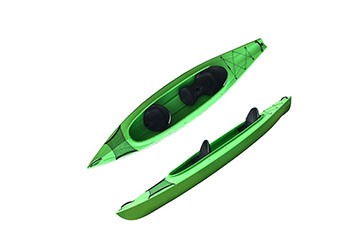Is Kayaking Hard If You've Never ever Done It?(2)
Is Kayaking Hard If You've Never ever Done It? (2)
Kayak Paddles
Perhaps the greatest difference between canoes as well as kayaks is the paddle. Kayaks make use of a paddle that is double-bladed, while the paddle for the canoe is single-bladed. When selecting the ideal paddle for your kayak there are many things you require to take into consideration. These include:
Your dimension (height).
The dimension of the kayak.
Brushing preferences.
Kayaks that are larger and taller require a paddle that is longer than your ordinary size paddle. Likewise, if you are smaller in size as well as stature, a much shorter and lighter kayak paddle may be much easier for you to use and will not excessively tax you when paddling.
Like the paddle itself, the blades of the kayaks additionally come in different sizes and shapes. Wider blades will offer you even more acceleration, but you will certainly likewise encounter even more resistance with these blades, which can result in overexertion.
Narrower blades utilize less initiative to paddle per stroke, however they require even more strokes to cover the same range. Blades also come level or bent. Although flat blades are generally more cost-effective, a curved blade enhances the power of each stroke.
Some blades are feathered, indicating they are balanced out at an angle, cutting down on wind resistance. Similar to finding the appropriate kayak, you might have to attempt several various paddle kinds up until you discover the one that is best for you.
Safety And Security Equipment/Apparel/ Devices
One of the most important pieces of security tools that ought to constantly be used when kayaking is a life vest, likewise referred to as a personal flotation device. Even if you are just paddling on a tranquil lake or lazy river, the life vest is a piece of security equipment that need to never ever be steered clear of.
In fact, life vests are required apparel when in the water, and also in nearly all situations, children under the age of 16 are called to use a life vest. Luckily, there are several life vest designs available for purchase that are extremely light-weight and also comfy, and they won't weigh you down unnecessarily or obstruct the paddling by any means.
If you intend to kayak in extremely rough waters, such as wild water rapids, you need to also wear a helmet whatsoever times. It is extremely simple to fall in the water when kayaking in these settings and headgear will safeguard your noggin from any kind of rocks or trees with which you could clash upon entering the water.
A spray skirt is also a good financial investment if you intend to kayak often. Spray skirts are created to cover as well as seal the cockpit of the vessel, hence maintaining the reduced half of your body dry and also comfortable as you paddle.
Lastly, a completely dry bag, which is commonly placed close to you in the cockpit of the kayak, can help keep your personal valuables dry and secured, such as your budget, mobile phone, or other accessories.
Learning the Kayak
It is necessary that you discover exactly how to get in and also out of the kayak efficiently. This is typically the greatest difficulty for several beginner kayakers.
The key is to keep your weight reduced and also centered. For example, if entering the kayak from the dock, you must keep the edge of the dock with your hand while slowly stepping into the cabin with one foot and afterward the other. Remain to support on your own by comprehending onto the dock as you reduced the rest of your body into the kayak. To exit, it coincides with point backward. Raid the dock. Draw your knees out, versus the cabin, as well as slide-out onto a resting setting on the dock.
Standard paddling techniques, such as exactly how to hold the paddle based upon your body size as well as kind of vessel, are best learned from a certified teacher. Nevertheless, we can tell you that every paddling stroke essentially contains three parts: the wind-up, catch, and recovery.
The wind-up phase refers to the placement of your body throughout the stroke. If your preliminary stroke is on the appropriate side of the kayak, you will require to wind your upper body in that direction, hence enabling you to place the paddle near your feet on the right side.

The very same holds true for the succeeding paddle on the left side. The catch stage happens as your blade gets in or "catches" the water. Simply unwind your upper body, which will certainly pull the blade through the water. Maintain your feet on the fixes located inside the kayak. This will ensure that your core, as well as not your arms, is doing the mass of the job.
Ultimately, healing happens at the end of each stroke. As you conclude the very first, right-side stroke, raise the paddle out of the water towards the hull (seating area) of the kayak, which will certainly permit you to wind up in the direction of the left side for the next stroke. Let your joint guide the paddle and also your wrist will comply with it.
We are kayaks suppliers. Please feel free to contact us.










